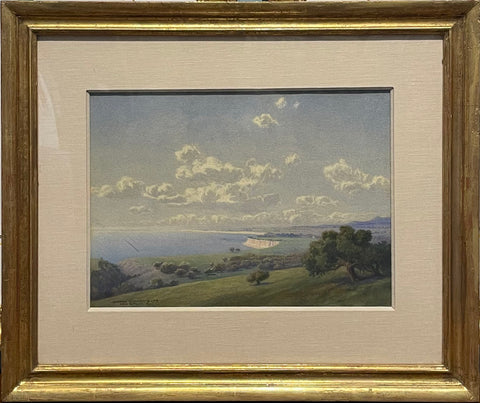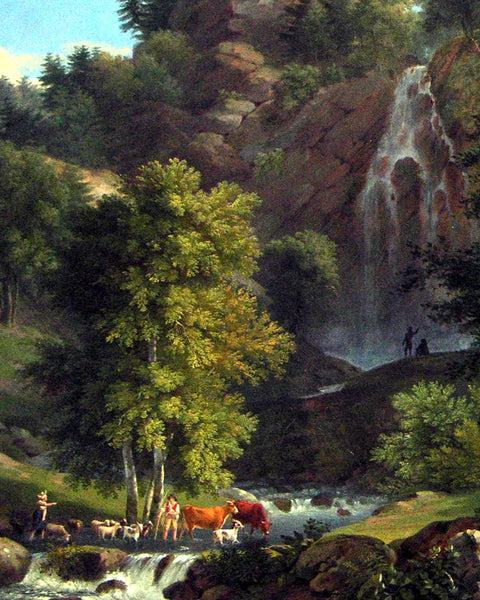Arader Galleries
From Reservoir Hill, Santa Barbara, California
Pickup currently unavailable
George Elbert Burr (1859-1939)
From Reservoir Hill, Santa Barbara, California
Watercolor on paperboard
Image size: approx. 9.8” x 13.7”
Framed size: 18.2” x 21.5”
Signedl.l.: George Elbert Burr Santa Barbara Calif.
This is an exquisite watercolor of Santa Barbara, California, fully expressive of the town's tranquil character and stunning seaside beauty. Depicted from the vantage point of Reservoir Hill, George Elbert Burr’s (1859-1939) composition illustrates a magnificent sweep of the Pacific coastline. Ultimately, this is a superb illustration of "America's Riviera," created by an exceptionally gifted landscape artist of the eighteenth and nineteenth centuries.
Burr has employed a range of colors in his vivid portrayal of Santa Barbara's lush fields, verdant trees, and azure sky. Indeed, vibrant shades of blues, green and purple no less than electrify Burr's stunning representation of the Pacific Ocean. What is more, this watercolor brilliantly showcases Burr's outstanding ability to represent different textures, including the glassiness of water, the fluffiness of a cloud, and the coarseness of tree leaves.
Burr was born in 1859 in Cleveland, Ohio. He studied art at the Art Institute of Chicago (then called the Chicago Academy of Design), and spent his early career creating illustrations for a number of distinguished New York magazines, including Harper’s, Cosmopolitan, and Frank Leslie’s Weekly Newspaper. It was Burr’s work for Leslie’s that first enabled him to travel coast-to-coast throughout America, and, most significantly, fueled his passion for creating landscapes.
In 1892, Burr began a four-year project to illustrate the catalogue of Heber R. Bishop’s jade collection at the Metropolitan Museum of Art. In 1896, he commenced a five-year expeidition to Europe. Upon his return to the United States, Burr moved to Colorado and later to Arizona. It was during this pivotal time period that Burr produced a number of his most famous prints that depicted a number of the most monumental deserts and mountain ranges of the American West. Burr remained in Phoenix, Arizona until his death in 1939.
Burr’s works are in the collections of The Library of Congress, The Metropolitan Museum of Art, The Detroit Institute of Arts, and the Brooklyn Museum of Art.


